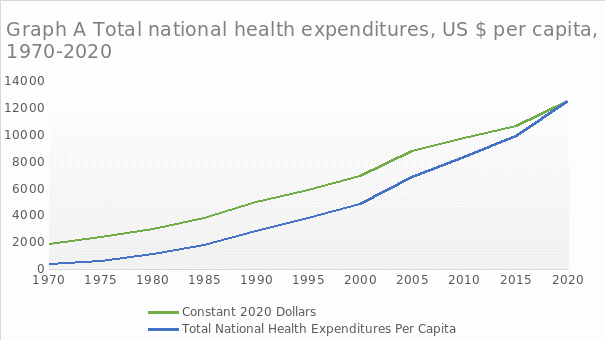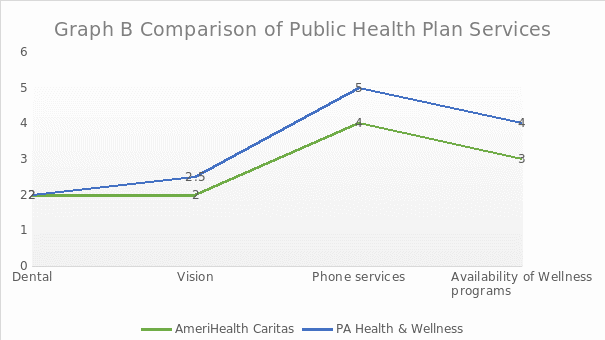Introduction
Public health and healthcare is an integral theoretical and applied science that studies the patterns of influence of socio-economic factors and environmental conditions on the population’s health and substantiates the state’s system and public and medical measures to protect the health of citizens. Public health is the science and practice of preventing disease, prolonging life, and promoting health through organized action taken by society (Future Learn, n.d). Public health has many fields of activity but usually includes the interdisciplinary categories of epidemiology, biostatistics, and health services. In addition, environmental health, community health, behavioral health, and occupational health are essential areas of public health.
Population health is “a multidisciplinary, customizable approach that allows health departments to link practice with the policy so that change happens locally. Goldfield et al. (2020) argue that the US should move from a patient-focused system to a public health system. This approach leverages non-traditional partnerships across different sectors of society—public health, industry, academia, healthcare, local governments, etc.—to achieve positive health outcomes.” Population health differs from public health and other healthcare concepts that people and patients face because of its results-based approach. Population health concerns a group of individuals who share certain traits, introduce a health intervention and evaluate how that intervention has affected health outcomes.
For example, a population health management strategy may target diabetic patients at a particular primary care clinic. Providers can monitor key health indicators such as blood glucose levels and implement population-based interventions to reduce these indicators. The public health strategy will track these indicators, inform about changes in the strategy, and ultimately work towards the ultimate goal, usually to reduce health care costs.
The Key Elements of a Community Health Plan
The public all over the planet faces various health problems, such as obesity, diabetes, asthma, heart disease, and other problems. Sacks et al. state that “many services are provided at the community level” (p. 2). A timely, updated public health plan is the key to the success of the local medical system. There are several vital elements in forming a public health plan. First, it should be identified the goal and desired outcome of the plan and create a metric that will help track the work’s results. Secondly, analyzing all factors affecting the final indicators is of great importance. The limiting factors contributing to the plan’s development should be described in detail. In addition, partners helping to implement the plan can be added to the factors that positively influence the process. A list of all the methods that have worked before or are still working in this area needs to be compiled to understand what can be used. Here can also be added new personal developments that seem promising. In addition, a plan should be developed with clearly defined deadlines and actions to be carried out.
The number one core element is the ability to assess and monitor the population’s health status. Public health surveillance the ongoing systematic collection, analysis, and interpretation of health-related data—is at the heart of this core service. This aspect includes public health activities such as promptly identifying health hazards, assessing the need for medical services, and collecting, analyzing, and publishing information on access, use, costs, and results of personal medical services. In addition, attention to vital statistics and the health status of specific groups at higher risk than the general population is also essential. Public health planning organizations should collaborate with private providers and health plans to manage integrated information systems. The Centers for Disease Control and Prevention (CDC) administer population surveillance systems at the national level. These include elements such as a behavioral risk factor surveillance system, a vital statistics system, and a national health interview.
The second key element of public health plans includes various public health activities. This can be the epidemiological identification of emerging health threats, using the capabilities of public health laboratories using modern technologies to conduct rapid screening and testing in large volumes. It also includes active infectious disease epidemiology programs and technical capabilities for the epidemiological investigation of disease and injury.
An essential element is preparing an accessible and coherent plan for everyone. It should be made visually attractive, easy to update and republish, and easy to navigate. Creating such an electronic brochure can increase the accessibility of citizens to it and improve public awareness of it. An excellent public health program should include strategies with a high likelihood of impact. In addition, the plan must be effective, and it must be modeled to what extent it can affect the progress of health care compared to the baseline. In addition, it is crucial to evaluate how the created strategy corresponds to social norms and values. If the plan goes against them, very few people will be reached.
An essential element in developing a plan is the prioritization of actions. Such priorities are set depending on the analysis of the above factors, such as the degree of impact, community values , and the project’s uniqueness. Another factor that significantly affects the effectiveness of the plan’s final version is the consideration of diversity. To do this and ensure all people’s equality, the creator of a public health strategy must approach the problem globally. It is worth prioritizing targeted intervention strategies for the most affected populations.
Another critical aspect of community health planning includes public health activities such as social marketing and targeted media communication with the public. This ensures the provision of accessible community health information resources, such as free mobile health screening initiatives. In addition, strengthening, supporting, and mobilizing communities and partnerships is essential. These interventions represent a holistic approach to public health in which professionals and even entire sectors of the community collaborate to plan, implement, monitor, evaluate and then modify interventions and repeat the process as needed.
One of the main components of the success of public health plans is public funding. According to Kurani et al. (2022) “On a per capita basis, health spending has increased sharply in the last five decades.” The next Graph A developed by Kurani et al. shows the dynamics of health care spending.

This study shows that over the past fifty years from 1970 to 2020, funding for medicine has increased significantly. According to Kurani et al. (2022) “In constant 2020 dollars, the increase was from $1,875 in 1970 to $12,531 in 2020”. This is a good sign as there is a trend towards an increase in spending on the medical sector, which contributes to its development.
Contrasting the Community Health Plan of 2 Different Healthcare Systems
The first public health organization to be compared was PA Health & Wellness. PA Health & Wellness is a managed care organization and a subsidiary of Centene Corporation (Centene), created to provide quality health care in Pennsylvania using local, regional, and community resources. PA Health & Wellness exists to improve the health of its beneficiaries through targeted, compassionate, and coordinated care. This company’s approach is based on the belief that quality care is best delivered locally.
Centene Corporation is a leading healthcare enterprise dedicated to helping people lead healthier lives. The company takes a local approach—with local brands and teams—to deliver fully integrated, high-quality, and cost-effective services to public and commercial healthcare programs, focusing on the underinsured and the uninsured. Centene offers affordable, high-quality products, including Medicaid and Medicare members. The company also provides various specialized services to treat the person. Centene focuses on long-term growth and value creation as well as developing its people, systems, and capabilities to serve better its members, suppliers, local communities, and government partners.
The second company also operates in Pennsylvania and is called AmeriHealth Caritas Pennsylvania. AmeriHealth Caritas Pennsylvania is a member of AmeriHealth CaritasOpens in a new window is a Medical Assistance (Medicaid) managed care plan serving many healthcare recipients in two Pennsylvania regions. AmeriHealth Caritas, headquartered in Harrisburg, Pennsylvania, offers all the benefits and services of conventional health care, as well as special programs and benefits available only to members of AmeriHealth Caritas. The organization is committed to providing a medical home that helps our members access their needed services. It offers extensive programs to help our members prevent illness and injury so they can live more fully. Graph B shows a comparative analysis of the two plans of the studied systems in the field of service delivery. For a more objective comparison, both public health plans were selected from the same state.

On the graph, the presence of the service is indicated by 3 points, and above, its absence is 2. Dental treatment is not available in both systems, and the scores are 2. Vision services are also not provided by both plans, however, PA Health & Wellness allows customers to order glasses and redirect to another service for an eye test, so it got a half point higher. Both organizations provide telephony services, but PA Health & Wellness provides a larger limit of minutes and internet. Wellness programs are also included in both programs, but AmeriHealth Caritas provides a smaller range of services. Based on the comparison results, it can be concluded that the PA Health & Wellness plan has a broader range of medical coverage than AmeriHealth Caritas.
Recommendations and Conclusion
In conducting this study, much information regarding the work of the Community Health Plan was studied. Based on this paper, it can be concluded that public health plans need constant work on mistakes and improvement. Many programs offer a wide range of services, but their cost is also high. To improve the provision of public health services, it is worth reviewing citizen support packages. It would be worthwhile to expand them by adding the possibility of assisting doctors and ophthalmologists. This would be useful for improving the overall health of the population. Although these are expensive services, they can introduce primary care in these categories without additional funding. Expanding the coverage of different plans to as many states as possible is essential, increasing the variety and choice.
References
Future Learn. (n.d.). What is public health? Web.
Goldfield, N. I., Crittenden, R., Fox, D., McDonough, J., Nichols, L., & Rosenthal, E. L. (2020). COVID-19 crisis creates opportunities for community-centered population health: community health workers: at the center. The Journal of ambulatory care management, 43(3), 184-190. Web.
Kurani, N., Ortaliza, J., Wager, E., Fox, L. and Amin K. (2022). How has U.S. spending on healthcare changed over time? Health System Tracker. Web.
Sacks, E., Morrow, M., Story, W. T., Shelley, K. D., Shanklin, D., Rahimtoola, M.,… & Sarriot, E. (2019). Beyond the building blocks: integrating community roles into health systems frameworks to achieve health for all. BMJ global health, 3(Suppl 3), e001384. Web.